 Simon’s cat – well…his sister’s dog – is campaigning against obesity in dogs after this unfortunate Christmas dinner:
Simon’s cat – well…his sister’s dog – is campaigning against obesity in dogs after this unfortunate Christmas dinner:
Category Archives: Dogs
Aggressive Dogs
Meghan Herron, veterinarian author of a recent study on dogs aggressive to other dogs says “the number-one reason why dog owners take their dog to a veterinary behaviorist is to manage aggressive behavior. Our study demonstrated that many confrontational training methods, whether staring down dogs, striking them, or intimidating them with physical manipulation, do little to correct improper behavior and can elicit aggressive responses.”
The use of such confrontational training techniques can provoke fear in the dog and lead to defensively aggressive behavior toward the person administering the aversive action.
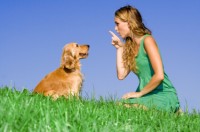 Far better to use non-aversive training methods including:
Far better to use non-aversive training methods including:
- Training the dog to sit for everything it wants (only 2% of owners reported aggression afterward)
- Rewarding the dog for eye contact (2%)
- Food exchange for an item in its mouth instead of forcing the item out (6%)
- Rewarding the dog for “watch me” (0%)
With consistent and regular sessions using these positive methods, aggressive dogs slowly gain confidence in their owners and become easier to take out on walks.
“Canine aggression and other behavior problems are not a result of dominant behavior or the lack of the owner’s ‘alpha’ status,” Heron says, “but rather a result of fear (self-defense) or underlying anxiety problems. Aversive techniques can elicit an aggressive response in dogs because they can increase the fear and arousal in the dog, especially in those that are already defensive.”
These fear inducing, aversive techniques should be avoided:
- Hitting or kicking the dog (41% of owners reported aggression in response)
- Growling at the dog (41%)
- Forcing the dog to release an item from its mouth (38%)
- “Alpha roll” (forcing the dog onto its back and holding it down) (31%)
- “Dominance down” (forcing the dog onto its side) (29%)
- Grabbing the jowls or scruff (26%)
- Staring the dog down (staring at the dog until it looks away) (30%)
- Spraying the dog with a water pistol or spray bottle (20%)
- Yelling “no” (15%)
- Forced exposure (to something that frightens the dog, such as tile floors, noise or people) (12%)
Lab test for bowel cancer?
A trained Labrador Retriever detects colorectal cancer almost as accurately as a colonoscopy, research from Japan shows.
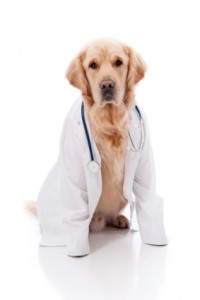 The dogs smell a chemical produced by the cancer in the faeces or breath of patients. They detect the cancer in its very early stages giving surgeons a very good chance of curing the disease.
The dogs smell a chemical produced by the cancer in the faeces or breath of patients. They detect the cancer in its very early stages giving surgeons a very good chance of curing the disease.
Other non-invasive tests do not detect bowel cancer as early and as efficiently as the Labs.
Other diseases of the lower bowel such as inflammatory bowel disease or benign colorectal disease don’t confuse the dogs. They react only to colorectal cancer.
Scientists are trying to pin down the volatile components that the dogs are responding to so that they can formulate a chemical test for them.
Toilet training your new puppy
Toilet training is fundamental to a new pup’s introduction to family life. Start it the minute you get home with her.
Choose a toileting place away from the deck, thoroughfares and busy spots like the clothesline.
Give her plenty of opportunities to go to this place. Take her out to this spot before she has time to find another: as soon as she wakes from a snooze, after food, after play or if she starts to sniff or circle suspiciously.
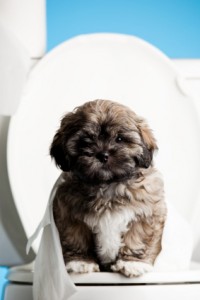 While she is toileting say “wee” or “potty” so that she learns to toilet on command. This is useful for the last walk before bed or when travelling.
While she is toileting say “wee” or “potty” so that she learns to toilet on command. This is useful for the last walk before bed or when travelling.
Positive reinforcement is the key to successful toilet training. Immediately reward her after she relieves herself. Praise her with a pat, “good girl” and, especially at first, give her a food treat. Try not to miss an opportunity for rewarding her for the right behaviour and she will soon learn to do the right thing.
Set an alarm to remind you to take her out again so she doesn’t make a mistake.
If she doesn’t go when you take her out, set a 10-15 minute alarm and keep her on lead, in a crate or with you to prevent any mishaps.
Short term confinement in a crate inhibits elimination and many pups will toilet as soon as they are released. Take advantage of this by rushing her to the chosen place as soon as you open the crate.
If she soils inside ignore her and clean the area with a non-ammonia based cleaning product like Urine-off so she doesn’t use the same place again.
Punishment for toileting inside will associate toileting near you with trouble. She will avoid you and toilet training will be delayed.
Dental X rays
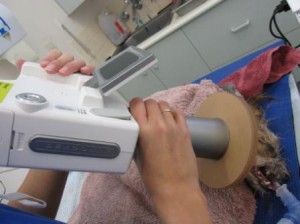 Nurse Ella lines up the new dental digital X ray unit with Lily’s molars. Crisp clear X rays of pets’ mouths enhance vets’ decision-making. No longer do we have to agonise over whether a tooth is healthy enough to leave or whether we should extract it to prevent mouth pain and infection. Nurse Ella will save Lily’s dental images to her record so that we can see if there has been any deterioration between dental treatments.
Nurse Ella lines up the new dental digital X ray unit with Lily’s molars. Crisp clear X rays of pets’ mouths enhance vets’ decision-making. No longer do we have to agonise over whether a tooth is healthy enough to leave or whether we should extract it to prevent mouth pain and infection. Nurse Ella will save Lily’s dental images to her record so that we can see if there has been any deterioration between dental treatments.
Digital imaging
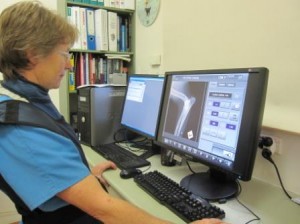 Dr Helen admires Bull Mastiff George’s X ray on our new digital X ray system. The high quality of the X ray images increases the accuracy of our diagnoses. We are able to fine tune and individualise your pets’ body and dental X rays and save them directly to their computer records. Copies of the X rays can also be sent electronically to veterinary imaging specialists and an opinion returned the same day. Already many pets’ lives have been improved or saved by this leap forward in technology.
Dr Helen admires Bull Mastiff George’s X ray on our new digital X ray system. The high quality of the X ray images increases the accuracy of our diagnoses. We are able to fine tune and individualise your pets’ body and dental X rays and save them directly to their computer records. Copies of the X rays can also be sent electronically to veterinary imaging specialists and an opinion returned the same day. Already many pets’ lives have been improved or saved by this leap forward in technology.
Doggy dementia
Dementia affects old dogs in the same way it affects some older people with declining brain function.
Signs of dementia:
- Disorientation: staring into space, getting lost in the house or yard, getting stuck in corners or under furniture, standing at the wrong door to go out
- Reduced interaction with human family members: not greeting owners or seeking attention, following people around the house or losing interest in household events
- Loss of house-training: urinating or defecating in the house, not using the doggie door or not asking to go out to toilet
- Erratic sleeping behaviour: waking, pacing or vocalizing at night, sleeping less at night and more during the day
- Loss of learned behaviours
- Slow and cautious gait
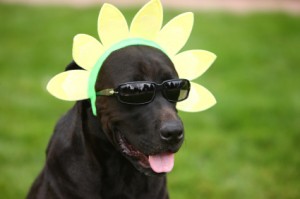 An aged dog exhibiting at least one of these signs more than once a week for at least a month has dementia.
An aged dog exhibiting at least one of these signs more than once a week for at least a month has dementia.
Dogs showing any signs are often severely affected within 12-18 months.
Treatment
- Diet:
Anti-oxidants delay and treat dementia. Antioxidants include Vitamin E, Vitamin C, Alpha-lipoic acid, L-carnitine and beta-carotene. Fruits and vegetables contain many of these.
Omega 3 fatty acids as found in fish oil or food supplements such as Nutricoat also help.
Hills b/d (brain diet) is a prescription diet that contains these nutrients.
- Physical therapy:
Stimulate brain function and delay the onset of dementia with basic obedience training, scent discrimination tasks, safety-modified obstacle courses and hide and seek games.
Gentle walks or swimming delay loss of brain function as well as improve muscle function.
- Environmental enrichment
Petting, brushing and massage stimulate the nerves and brains of old dogs. New toys, blinking lights, walks in new areas with new smells, and meeting new animals and people boost an old dog’s brain function and enjoyment of life.
Kidney failure
Dogs with failing kidneys drink a lot of water and produce large quantities of urine.
Old or damaged kidneys don’t eliminate all of the body’s waste products and cannot concentrate urine very well.
When is this likely to happen in my dog?
Chronic kidney failure is the result of ageing; it is simply a “wearing out” process.
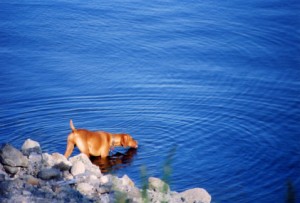 Small dogs show signs from 10 years of age. Larger breed dogs’ kidneys may fail as early as 7 years of age. In some breeds there is a genetic predisposition to kidney failure.
Small dogs show signs from 10 years of age. Larger breed dogs’ kidneys may fail as early as 7 years of age. In some breeds there is a genetic predisposition to kidney failure.
What do I see if my dog’s kidneys are failing?
Dogs with kidney failure produce large volumes of dilute urine. This increases thirst in an effort to overcome dehydration.
As waste products build up in the blood they lose their appetite, are depressed, vomit, and have very bad breath. Ulcers form in the mouth. These signs of advanced kidney failure are called uraemia.
How is chronic kidney failure diagnosed?
- Blood tests for the body’s waste products, urea and creatinine
- Urine tests for concentrating and filtering ability, and to find infection
Can we treat kidney failure?
In some cases the kidneys are so worn out they cannot be revived.
With early diagnosis and appropriate treatment many dogs survive for many months or even years.
Treatment occurs in two phases. The first phase is to flush out the toxins with large quantities of intravenous fluids. Fluid therapy, also known as a drip, also replaces lost electrolytes, especially potassium. Drugs to control vomiting and diarrhea, and to treat infection are given as necessary.
The second phase of treatment reduces the kidneys’ workload by reducing dietary protein. This keeps toxic by-products of protein digestion as low as possible and makes your dog feel better. A special kidney or renal diet is the easiest and most effective way of doing this.
Cushing’s disease
What is Cushing’s Disease?
The adrenal glands overproduce cortisol in dogs with Cushing’s Disease. Cushing’s disease is also known as Hyperadrenocorticism.
What causes Cushing’s disease?
The three causes of Cushing’s Disease are:
- A pituitary gland tumour which overproduces the hormone that stimulates cortisol production in the adrenal glands. The size of the tumour and its malignancy varies widely. Signs of brain problems develop if the tumour is large, but this is unusual. Most dogs with this form of Cushing’s Disease live normal lives for many years as long as they take their medication and stay under close medical supervision.
- Excessive administration over long periods of time of synthetic cortisones like prednisolone, triamcinolone or dexamethasone causes Iatrogenic Cushing’s disease.
- An adrenal gland tumour is an uncommon cause of Cushing’s Disease. Surgical removal treats this form of the disease
How do I know if my dog has Cushing’s?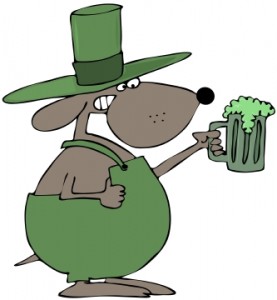
- A marked increase in appetite
- Increased water consumption and urination
- Lethargy, panting and a poor hair coat
- A pot-bellied or bloated abdomen
How is it diagnosed?
If we suspect Cushing’s Disease we run a blood test to check your dog’s general health. An enzyme in the test called Alkaline Phosphatase (ALKP) is usually high in dogs with Cushings.
If ALKP is high then we do a Low Dose Dexamethasone test (LDDT) which will confirm or deny Cushings Disease.
To determine which type of Cushing’s disease your pet has, we ultrasound the adrenal glands and do an endogenous ACTH blood test.
Although some of these tests are expensive, they are necessary to allow us to accurately target the treatment.
Cruciate ligament injury
Cruciate ligament injury in the knee or stifle joint causes acute lameness in the dog.
The stifle joint opens and closes like a hinge. The cruciate ligament prevents the two bones of the hinge from sliding back and forth.
The ligament and joint deteriorate with age. A sudden stop or twist tears the weakened ligament. The dog cries and cannot bear weight. Some dogs remain unable to put the leg down, others improve to varying degrees.
Diagnosis
The vet diagnoses rupture of the cruciate ligament by demonstrating instability or a drawer sign of the stifle joint. If the joint is very painful or the dog has strong leg muscles then a sedative or anaesthetic might be necessary to examine the joint thoroughly.
Treatment
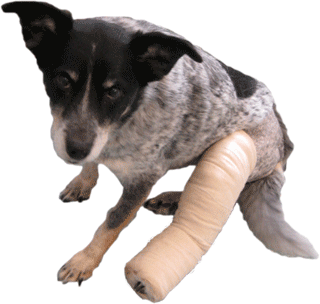 Most dogs require surgery to relieve the pain and prevent future arthritis. Inspection of the joint for cartilage damage, removal of the torn ligament and stabilisation of the joint with figure 8 sutures improves joint stability, reduces the development of arthritis and eliminates pain in small to medium sized dogs.
Most dogs require surgery to relieve the pain and prevent future arthritis. Inspection of the joint for cartilage damage, removal of the torn ligament and stabilisation of the joint with figure 8 sutures improves joint stability, reduces the development of arthritis and eliminates pain in small to medium sized dogs.
Restriction of activity for 3 months together with anti-inflammatory drugs may be adequate for smaller and lighter dogs. If the lameness does not improve significantly then the cartilage is probably damaged as well and surgery is necessary.
Referral to a specialist surgeon for a more complicated procedure is best for bigger or more active dogs.
Recovery
Full recovery from cruciate ligament surgery takes at least 3 months and the repaired knee will never be as good as new.
Recovery time is longer and the chance of rupture of the cruciate ligament in the other leg is increased in overweight dogs. Please discuss about strategies for weight reduction with your vet or vet nurse.
